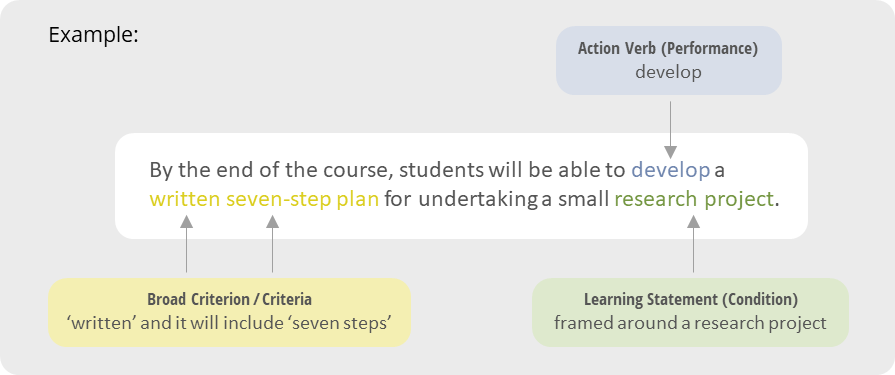One way of approaching writing a learning outcome is to think of it as comprised of three parts:
1. Action Verb (Performance)
Considering what action might be involved in the learning outcome helps with figuring out what you want students ‘to do.’ An action verb is usually both measurable and observable.
2. Learning Statement (Condition)
A learning statement (condition) that describes the learning to be demonstrated (e.g., in a written report, evidence based)
3. Broad Criterion/Criteria
Broad criterion / criteria that give context / criteria for an acceptable performance (e.g., four dimensions of, the connection between…)
| If you’re not sure where to start, think about how you would describe to a friend, what students learn in your course / program. |
|
Handouts: |
